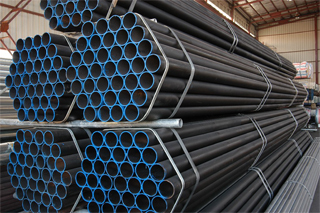The bending degree of steel pipes (seamless pipes and welded steel pipes) refers to the maximum degree of bending that the steel pipes can withstand during the bending process. This parameter is very important for the use of steel pipes, because it directly affects the service life and safety performance of steel pipes.
The bending degree of the steel pipe is related to the material, diameter, wall thickness, bending radius and other factors of the steel pipe. Generally speaking, the smaller the bending radius, the greater the bending of the steel pipe. At the same time, the greater the wall thickness of the steel pipe, the greater the curvature.
In practical applications, the bending degree of the steel pipe often needs to be selected according to the specific use requirements. If the bending is too small, problems such as fracture and deformation of the steel pipe may occur during use, which will affect the service life and safety performance. And if the bending is too large, the strength and stability of the steel pipe will also be affected, which will also affect the service life and safety performance.
Therefore, when selecting the bending degree of the steel pipe, it is necessary to comprehensively consider according to the specific use requirements and environmental conditions. Generally speaking, if the steel pipe needs to withstand large pressure or tension under bending, the bending should be as small as possible to ensure the strength and stability of the steel pipe. And if the steel pipe only needs to bear a small force under the condition of bending, then the degree of bending can be increased appropriately to improve the service life of the steel pipe.

The bending degree specified in the standard is generally divided into the following two types:
(1) Local curvature: Measure the chord height (mm) at the maximum bend of the steel pipe with a one-meter-long ruler, which is the value of the local curvature. The unit is mm/m, and the expression method is 2.5mm/m. This method is also applicable to the curvature of the pipe end.
(2) The total curvature of the whole length: Use a thin rope to tighten from both ends of the pipe, measure the maximum chord height (mm) at the bend of the steel pipe, and then convert it into a percentage of the length (in meters), which is the full-length bending degree of the steel pipe in the length direction.
The bending degree of the steel pipe is a very important parameter, which directly affects the service life and safety performance of the steel pipe. When selecting the bending degree of the steel pipe, it is necessary to comprehensively consider according to the specific use requirements and environmental conditions, so as to ensure the strength and stability of the steel pipe, and at the same time improve the service life of the steel pipe
The bending degree of the steel pipe is related to the material, diameter, wall thickness, bending radius and other factors of the steel pipe. Generally speaking, the smaller the bending radius, the greater the bending of the steel pipe. At the same time, the greater the wall thickness of the steel pipe, the greater the curvature.
In practical applications, the bending degree of the steel pipe often needs to be selected according to the specific use requirements. If the bending is too small, problems such as fracture and deformation of the steel pipe may occur during use, which will affect the service life and safety performance. And if the bending is too large, the strength and stability of the steel pipe will also be affected, which will also affect the service life and safety performance.
Therefore, when selecting the bending degree of the steel pipe, it is necessary to comprehensively consider according to the specific use requirements and environmental conditions. Generally speaking, if the steel pipe needs to withstand large pressure or tension under bending, the bending should be as small as possible to ensure the strength and stability of the steel pipe. And if the steel pipe only needs to bear a small force under the condition of bending, then the degree of bending can be increased appropriately to improve the service life of the steel pipe.

The bending degree specified in the standard is generally divided into the following two types:
(1) Local curvature: Measure the chord height (mm) at the maximum bend of the steel pipe with a one-meter-long ruler, which is the value of the local curvature. The unit is mm/m, and the expression method is 2.5mm/m. This method is also applicable to the curvature of the pipe end.
(2) The total curvature of the whole length: Use a thin rope to tighten from both ends of the pipe, measure the maximum chord height (mm) at the bend of the steel pipe, and then convert it into a percentage of the length (in meters), which is the full-length bending degree of the steel pipe in the length direction.
The bending degree of the steel pipe is a very important parameter, which directly affects the service life and safety performance of the steel pipe. When selecting the bending degree of the steel pipe, it is necessary to comprehensively consider according to the specific use requirements and environmental conditions, so as to ensure the strength and stability of the steel pipe, and at the same time improve the service life of the steel pipe









